 Fraunhofer FEP (The Fraunhofer Institute for Organic Electronics, Electron Beam and Plasma Technology) is a research institute that focuses on innovative solutions in the fields of vacuum coating, surface treatment and organic semicconductors. The core competences technologies for the organic electronics and IC/system design are electron beam technology, sputtering, plasma-activated deposition and high-rate PECVD. The Fraunhofer FEP offers a wide range of possibilities for research, development and pilot production.
Fraunhofer FEP (The Fraunhofer Institute for Organic Electronics, Electron Beam and Plasma Technology) is a research institute that focuses on innovative solutions in the fields of vacuum coating, surface treatment and organic semicconductors. The core competences technologies for the organic electronics and IC/system design are electron beam technology, sputtering, plasma-activated deposition and high-rate PECVD. The Fraunhofer FEP offers a wide range of possibilities for research, development and pilot production.
In 2009, the Fraunhofer IPMS launched COMEDD (the Center for Organics, Materials and Electronic Devices Dresden), as a venue to develop OLED lighting and OLED microdisplay technologies. COMEDD started as a department at IPMS, then turned into an independent Fraunhofer Institute in 2012, and later it was incorporated into the FEP. In 2024 COMEDD, which now focuses on OLED microdisplays, was moved back into the Fraunhofer IPMS.
Maria-Reiche-Str. 2
01109 Dresden
Germany
Fraunhofer, Holst and VTT developed a new flexible OLED lighting bracelet produced at the EU PI-SCALE line
The Fraunhofer FEP, together with VTT and the Holst Center developed a new wearable OLED lighting bracelet, one of the first one of the first flexible organic electronic product to be produced at the European PI-SCALE pilot production line.
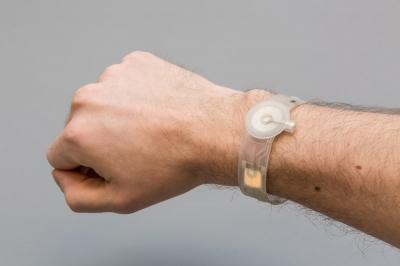
The yellow and red OLED deposition in this prototype was performed at the Fraunhofer FPP (which can handle both sheet-to-sheet and roll-to-roll processes), while the barrier web was produced at the Holst Centre. VTT integrated the OLEDs into the bracelet. Such a bracelet, with its low power consumption, could be used as a security device, as a fashion jewelry, and more.
Ten German companies establish a new OLED lighting forum
Ten Germany-based companies established a new OLED lighting alliance, called the "OLED Licht Forum" that aim to develop and promote OLED lighting technologies through dialogue and expert exchange. The forum will also organize conferences, lectures and institution visits.
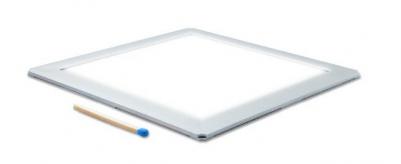
The forum was founded by OLEDWorks, OSRAM, Merck, BASF coatings, EMDE, Fraunhofer, Hema electronic, Irlbacher, APEVA and WALO-TL. One of the first activities will be to create an OLED showroom in Germany that will be open to the public.
The LOMID project partners manage to produce 1" curved WUXGA OLED Microdisplays at satisfactory yields
In January 2015 the EU launched a new project to develop next-generation large-area OLED microdisplays. The so-called LOMID (Large cost-effective OLED microdisplays and their applications) project's main goal is to produce 13x21 mm (~1-inch diagonal) 1200x1920 (2,300 PPI) 120Hz curved OLED microdisplay.
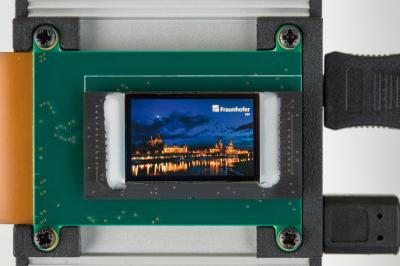
Dr. Uwe Fogel, the project's coordinator from the Fraunhofer FEP institute, updated today that the consortium managed to produce the first microdisplay samples at satisfactory yields, and it is now improving these yields. LOMID partners are already demonstrating the microdisplays in smart glasses for both VR and visually-impaired people.
The Fraunhofer FEP demonstrate AR/VR dataglasses based on its SVGA bi-directional OLED microdisplays
The Fraunhofer FEP institute has successfully integrated its bi-directional OLED microdisplays into an VR / AR HMD (or dataglasses, as the Fraunhofer calls it) for 2D and 3D content.
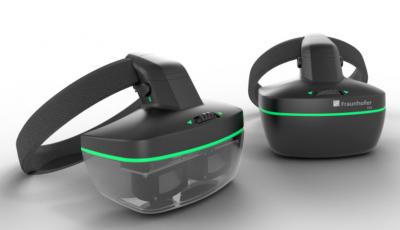
The new HMD demonstrator uses the Fraunhofer's SVGA (800x600) displays and connects via a USB interface and an HDMI connection. The bi-directional displays can be used for eye tracking to support novel user interfaces.
The Fraunhofer FEP, NSMAT and MSSMC developed an OLED on a stainless steel substrate
The Fraunhofer FEP institute, in collaboration with Nippon Steel & Sumikin Materials (NSMAT) and Nippon Steel & Sumitomo Metal Corporation (NSSMC), developed a new OLED lighting prototype that is made on a stainless steel substrate.
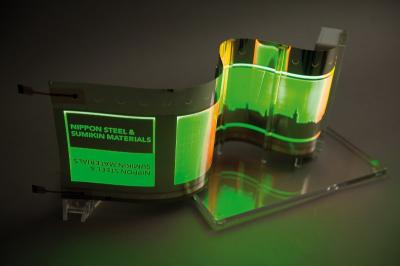
The researchers say that a stainless steel substrate has several advantages compared to glass or plastic - it has excellent thermal conductivity and excellent barrier properties. The lighting panel features an extremely homogenous OLED light, thanks to the planarization layer developed by NSSMC. The prototype panel was produced at the Fraunhofer's R2R research line.
Fraunhofer FEP and Sefar demonstrate a flexible OLED lighting panel made in a roll-to-roll process
Fraunhofer FEP and Sefar developed a roll-to-roll processed large-area flexible OLED lighting panels in a joint project. This achievement followed a batch-based flexible OLED panel demonstrated in early 2017.
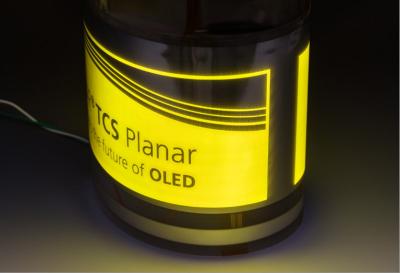
The R2R process currently used enables Fraunhofer and Sefar to produce 30 cm wide OLEDs in lengths of up to 30 meters.
Fraunhofer FEP develops a high-accuracy fingerprint sensor based on its bi-directional OLED microdisplays
The Fraunhofer FEP institute in Germany first unveiled its bi-directional OLED microdisplays in 2012 with the novel idea of embedding photo detectors between the OLED pixels. Since then the instituted demonstrated its second-generation microdisplay that supported a resolution of 800x600 (SVGA), up from VGA in the first generation prototypes.
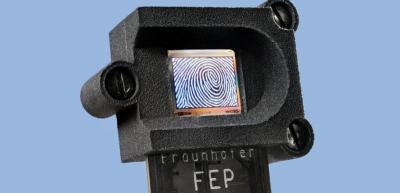
The Fraunhofer FEP now announced that it developed a new generation of these displays, that employ an extra-think encapsulation layer, which can turn these new displays into fingerprint sensors. The idea is that the OLED display illuminates the fingers and then the reflected light is used to detect and analyze the fingerprint with excellent accuracy.
The EU launches a €4 million project to develop efficient hyperfluorescence TADF OLED emitters
The EU launched a new project called HyperOLED with an aim to develop materials and matching device architectures for high-performance, hyperfluorescence TADF OLED emitters. HyperOLED is coordinated by Merck, and the project partners include MicroOLED and the Fraunhofer IOF institute. This three years project received a €4 million grant from the EU.
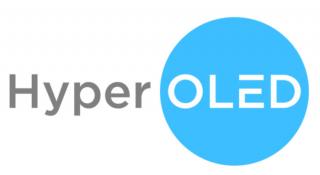
These OLED emitters will be realized by combining TADF molecular hosts with novel shielded fluorescence emitters, targeting saturated blue emission of very high efficiency at high brightness. The project will also achieve efficiency gains through molecular alignment to enhance light outcoupling.
New German OLED technology alliance founded
Four companies in Germany have established a new industry alliance, the German OLED Technology Alliance, or GOTA. The aim of this alliance is to combine the experience of its partners in the area of OLED manufacturing. Each partner's expertise lies at a different stage of the value chain, and the four partners will support a joint sales effort - mostly in China, Taiwan and Japan.
The four partners are VON ARDENNE (systems engineering and technology development for PVD vacuum coating system), Notion Systems (functional materials inkjet platforms), Fraunhofer IAP (organic electronics research) and MBRAUN (protective gas atmosphere solutions).
Von Ardenne and the Fraunhofer FEP to intensify their cooperation on flexible glass coating
Von Ardenne announced that the company developed an innovative machine to process flexible glass. The FOSA LABX 330 Glass enables a roll-to-roll glass coating process. This first of its kind machine was developed as part of the German KONFECT project, launched in 2015, together with partners Fraunhofer FEP, Schott and Tesa.
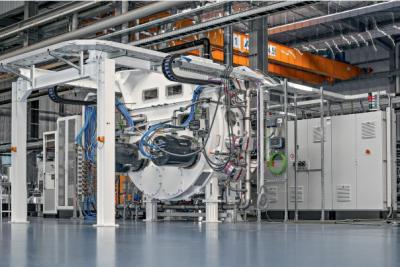
Von Ardenne now says that it intends to intensify its cooperation with the Fraunhofer FEP in the flexible glass coating field. The Fraunhofer will present coating samples of glass produced using the new machine for the first time at LOPEC 2017.
Pagination
- Previous page
- Page 3
- Next page



